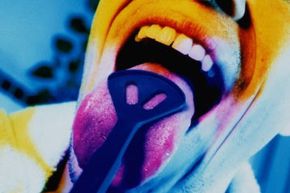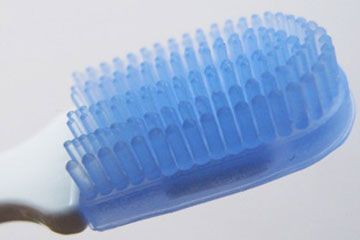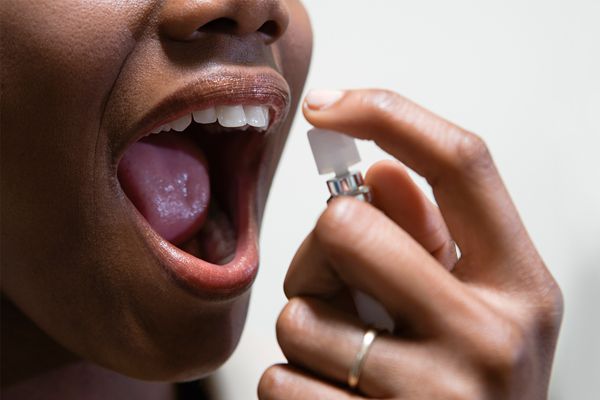Bad breath can be the result of conditions like pneumonia, bronchitis, diabetes, and liver or kidney problems, but more often than not, it's a direct result of what's going on in your mouth. Though you might imagine that the food you eat goes straight from your mouth to your stomach, hips and thighs, some of it actually hangs around between your teeth, and while it starts to break down fairly quickly, the nourishment it offers prompts a spike in the growth of your mouth's ever-present bacteria, which can send you scrambling -- at least at first -- for a pack of breath mints.
Next, though, you'll be looking for a way to get rid of the problem for good, and a tongue scraper may be part of that solution.
Advertisement
You see, that odor-causing bacterial growth can affect your teeth, gums and tongue. While the regular brushing and flossing dentists recommend address the teeth and gums, it's all too easy to forget about the tongue. However, the tiny bumps and ridges that cover the tongue's surface provide an excellent environment for bacteria -- which create smelly volatile sulfur compounds (VSCs) like hydrogen sulfide, methyl mercaptan and dimethyl sulfide -- to thrive. Ridding your tongue of these bacteria can go a long way toward improving your breath.
That's where tongue scrapers come in. These small, plastic devices feature a curved edge so that when you drag them across the top of your tongue, they'll scrape off the germs and bacteria that cause bad breath as they go. Of course, brushing your tongue with your toothbrush may also accomplish this. However, the landscape of the tongue's surface is perfect for hiding bacteria, meaning that a toothbrush's pliant bristles aren't always capable catching all of the offensive cells.
According to WebMD, studies suggest that using a tongue scraper is slightly more effective than brushing your tongue when it comes to tackling problems with bad breath [source: Hitti]. But a 2004 study by researchers at Brazil's University of Sao Paulo showed more dramatic results: a 75 percent reduction in VSCs through tongue scraper use, compared to only a 45 percent reduction in VSCs when a toothbrush was used to clean the tongue [source: Pedrazzi].
Using a tongue scraper is easy: Simply place it toward the back of your tongue, and drag it forward toward the tip of your tongue. As is the case with brushing your tongue, there won't be any surefire way to tell when you're finished, other than spending a little time doing it until satisfied. However, if you have any irritation of the tongue, cuts or open sores, give your tongue a chance to heal before scraping it.
If bad breath persists, talk to your dentist and family doctor. Gum disease, cavities or an undiagnosed health condition may be to blame. And for lots more information on tongue scrapers and bad breath, please check out the next page.
Advertisement



